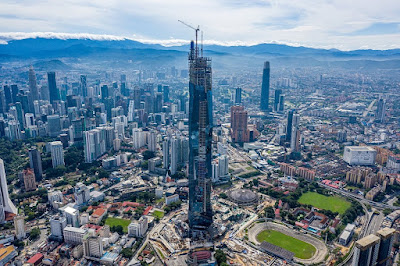High rises contacting the sky is the image of metropolitan style. Extraordinary improvement in designing abilities throughout the years joined with innovation is making nations assemble increasingly high structures pushing the limits.
Through this blog I would like to share with you the top 10 tallest buildings in the world that are indeed a great work of architecture which are quoted from https://www.thetealmango.com/featured/tallest-buildings-in-the-world/
1. Burj Khalifa, Height: 828 Metres
Located in Dubai. Burj Khalifa is 828 Metres
in height and has 163 floors that can accommodate 30,000 people.
2. Merdeka 118, Height: 678.9 Metres
This 118-storey
megatall skyscraper has been designed by Australian firm Fender Katsalidis.
Location is Kuala Lumpur Malaysia.
3. Shanghai Tower, Height: 632 Metres
Shanghai Tower is the
world’s third tallest building. It was inaugurated in the year 2014 that took
more than 8 years to complete.
4. Abraj Al-Bait, Height: 601 Metres
Mecca based – Abraj
Al-Bait is a complex of seven skyscrapers owned by the government of Saudi
Arabia.
5. Ping An Finance Tower, Height: 599 Metres
Ping An Finance Tower is the
world’s fifth tallest and the second tallest building in China. It is located
in the city of Shenzhen and is 599 Metres tall.
6. Lotte World Tower, Height: 555 Metres
The Lotte World Tower is
South Korea’s tallest building that took 13 years to complete. It was
inaugurated 4 years back in 2017 that is located alongside the banks of the Han
River
7. One World Trade Center, Height: 541 Metres
One World Trade Center is the
seventh tallest building in the world and the tallest building in the US
located in the city of New york.
8. Guangzhou Chow Tai Fook Finance Centre, Height: 530 Metres
Guangzhou Chow Tai Fook
Finance Centre, also known as Guangzhou CTF Tower is located
in the suburban area of Guangzhou, China.
9. Tianjin Chow Tai Fook Finance Centre, Height: 530 Metres
Tianjin Chow Tai Fook Tower
is China’s fourth-tallest building and the world’s ninth tallest building. The
construction of this building was completed in 2018.
10. China Zun, Height: 527.7 Metres
China Zun, also known as
CITIC Plaza is named after an ancient vessel. China Zun, the tallest building
of Beijing was inaugurated in March 2019.
Those
are the ten tallest buildings in the world. Hopefully, this information is
interesting for you and don't forget to comment and like
Note :
Text and pictures were taken from https://www.thetealmango.com/featured/tallest-buildings-in-the-world/









































